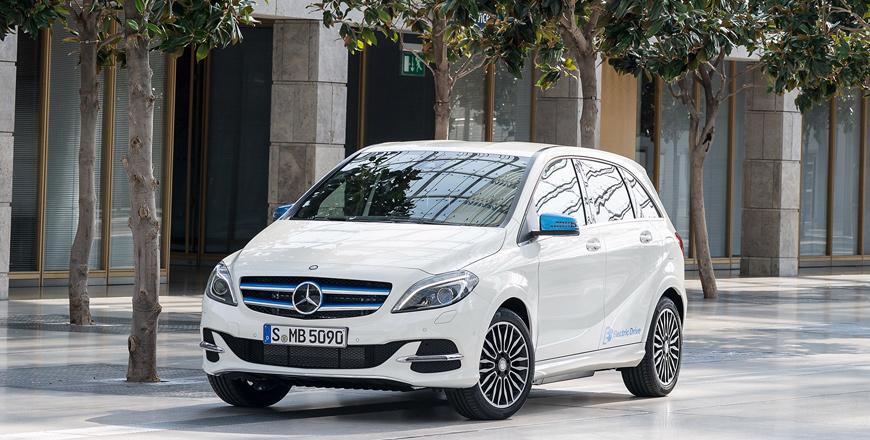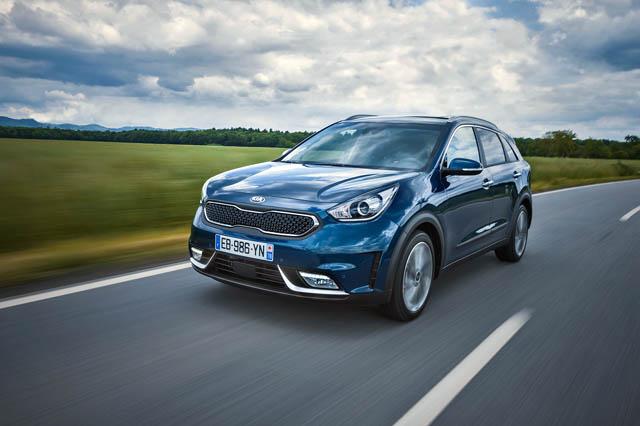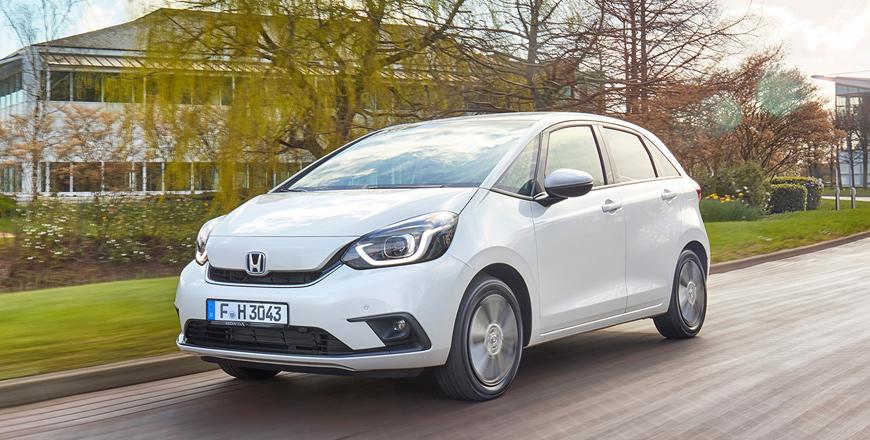You are here
Mercedes-Benz B250e Electric Drive: School run special
By Ghaith Madadha - Aug 19,2019 - Last updated at Aug 19,2019

Photo courtesy of Mercedes-Benz
Introduced late 2013 as a 2014 model and phased out as of this year owing to the arrival of a new B-Class model, the Mercedes-Benz B250e Electric Drive is, however, a popular car on Jordanian roads, and one that remains widely available through independent auto traders and importers.
A far cry from its gull-wing door 740BHP SLS AMG Electric Drive super grand tourer and fellow 2013 alumni or the recent EQC all-electric luxury SUV, the B250e is instead the German manufacturer’s take on a more accessible mass market electric vehicle.
Competing in a broad segment that includes electric cars like the Ford Focus Electric, Volkswagen E-Golf and BMW i3, the B250e may lack the former two’s comparatively nimbler handling or the purpose-built and quirky-looking Bavarian contender’s advanced and lightweight carbon-fibre construction.
However, the fact that Mercedes’ attainable EV is built on a B-Class compact SUV, is its chief advantage. Its taller, more spacious cabin allows for better EV modification and packaging, with the heavy batteries located in a low and central position for better weighting and no sacrifice in cargo capacity.
Smooth and silent
Powered by an electric motor co-developed with Tesla Motors and a 28kWh lithium ion battery, the front-driven, automatic single-speed gearbox B250e develops 177BHP and
251lb/ft torque. With near instant full torque availability, the B250e is responsive off the line and hauls its hefty 1,780kg mass through 0-100km/h relatively briskly in 7.9 seconds.
Near silent in operation and generously versatile when cruising, the B250e’s acceleration rate trails off at higher speeds, but can attain an electronically-restricted 160km/h. Meanwhile, the B250e’s fuel consumption equivalency is rated at 2.76, city, and 2.86 on highway.
More efficient in cities and as a commuter rather than on highways like other EVs and in contrast to combustion engine vehicles, the compact B250e is best in an urban environment, rather than for long distance driving. Not ideally suited for long road trips, the B250e’s range is rated at 140km by the US Environmental Protection Agency and estimated at up to 200km by Mercedes’ literature.
This of course can be adversely affected by real world traffic, weather, road and topography conditions and driving style, while battery capacity is expected to deteriorate slightly over time.
Urban ability
Brisk when driven with a heavy foot, accessing the B250e’s best performance does, however, tend to noticeably reduce range, but can be limited to 131BHP in Economy driving mode and 87BHP with a 110km/h top speed in Economy+. The B250e also allows one to alter the level of brakeforce energy recovery through steering mounted paddles.
Fully rechargeable in 3.5-hours and up to a range of 97km in 2-hours when using a 240V, 40A phase 2 charger, and depending on conditions, the B250e’s regular 230V, 16A domestic recharge time rises significantly to 9.1-hours.
Refined, smooth and well-insulated from vibrations, harshness and noise, the B250e is a comfortable and relaxed highway cruiser and urban runaround that is easy to manoeuvre and park. Through twistier roads, its light steering is user-friendly while its under floor batteries well concentrate weight low and within the wheelbase, which lends is felt on choppy roads and through corners, where body lean is less than expected for a comfortably sprung car. Composed in most situations, the B250e could however do with slightly tauter rebound control over sudden dips and crests.
Compact comfort
Driven hard into tight corners, there is slight understeer if pushed too hard in, and some torque steer if one comes back on the accelerator too early or aggressive out of a corner, one however soon gets the hang of the B250e and its general EV handling quirks in terms of cornering speeds, angles and power modulation. With a comparatively big wheelbase benefitting both highway stability and legroom, the B250e’s tall cabin allows for favourable battery location, high seating with good road view, good front headroom and decent rear passenger space.
Not Mercedes best looking car, the B250e is however attractive enough for a rounded, compact and tall MPV, and features a prominently rising side ridge and concave surfacing for more character, while its well-equipped cabin is pleasant, elegant and luxurious enough for its segment, but not quite as upmarket as Mercedes’ more upscale models.
Another benefit of the B250e’s mid-under floor batteries is that its luggage capacity remains a generous 501-litres and expands to 1,456-litres with rear seats folded.
A pretty decent, roomy and comfortable, if not especially exciting compact urban MPV and school run special, one however feels that either a petrol-powered B-Class or a two- or three-row version of Mercedes’ Citan compact van and MPV model line would offer better range, versatility and dynamics.
TECHNICAL SPECIFICATIONS
Engine: AC synchronous, front-mounted electric motor
Battery/capacity: Lithium-ion/28kWh
Gearbox: 1-speed automatic, front-wheel-drive
Power, BHP (PS) [kW]: 177 (179) [130]
Torque, lb/ft (Nm): 251 (340)
0-97km/h: 7.9-seconds
Top speed: 160km/h
Range: 140km*/200km
Fuel consumption equivalency, city/highway: 2.76-/2.86-litres
/100km**
Charging time, at 240V/40A/230V/16A: 3.5-hours/9.1-hours
Length: 4,356mm
Width: 1,811mm
Height: 1,590mm
Wheelbase: 2,697mm
Headroom, F/R: 1,016/940mm
Shoulder room, F/R: 1,409/1,381mm
Body: 5-doors/5-seats
Aerodynamic drag co-efficiency: 0.26
Luggage volume, min./max.: 501-/1,456-litres
Kerb weight: 1,725-1,780kg
Cargo capacity: 445kg
Steering: Electric-assisted rack & pinion
Turning circle: 11-metres
Suspension: MacPherson struts/multi-link
Brakes, F/R: Ventilated discs/discs, regenerative braking
Tyres: 225/45R17
*US Environmental Protection Agency
**Estimate
Related Articles
A mild hybrid version of what is perhaps Jordan’s most popularly aspirational car, the Mercedes-Benz E350 is a powerful, comfortable, classy
At a casual and distant glance one could be forgiven for mistaking the Kia Niro for a compact crossover SUV (CUV), perhaps a somewhat more a
Launched early last year, the fourth generation of the modern incarnation of the Honda Jazz is a small but practical city car, built from th


















